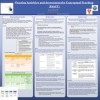Does Use of a Hypothetical Learning Progression Promote Learning of the Cardinal-Count Concept and Give-n Performance?
The general aim of the research was to conduct a rare test of the efficacy of hypothetical learning progressions (HLPs) and a basic assumption of basing instruction on HLPs, namely teaching each successive level is more efficacious than skipping lower levels and teaching the target level directly. The specific aim was evaluating whether counting-based cardinality concepts unfold in a stepwise manner. The research involved a pretest—delayed-posttest design with random assignment of 14 preschoolers to two conditions.
The general aim of the research was to conduct a rare test of the efficacy of hypothetical learning progressions (HLPs) and a basic assumption of basing instruction on HLPs, namely teaching each successive level is more efficacious than skipping lower levels and teaching the target level directly. The specific aim was evaluating whether counting-based cardinality concepts unfold in a stepwise manner.
